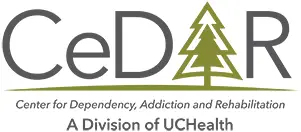Click here to listen to the audio version
MINDFULNESS
We teach mindfulness in addiction recovery. This is one of the core therapy approaches taught in treatment centers around the country. Emphasis on meditation, reflection, and self-acceptance provides deeper healing. Mindfulness is hot in the world of behavioral health. But what actually is it and why does it help? The core definition of mindfulness is as follows:
- Staying present in the moment
- Avoiding judgments, both positive and negative
One author, Jon Kabat-Zinn, described mindfulness as ‘‘paying attention in a particular way, on purpose, in the present moment, and nonjudgmentally’’ (Kabat-Zinn, 1994). A more thorough evaluation of surveys and observational data by Baer (Baer et al. 2006) lists a five-factor structure of mindfulness characterized by nonreactivity, observing, acting with awareness, describing, and nonjudging.
Mindful approaches trace back to Buddhist teachings. An emphasis on acceptance, embracing the moment for what it is, and a collective connection with others is key. These traits seem to be distorted in active addiction. During the addictive cycle, we find complete opposite traits:
- Resistance and Conflict
- Denial and distractibility
- Detachment and isolation
Neuroimaging Research on Mindfulness
A comprehensive article by Witkiewitz, et al [1] discusses some of the neuroscience findings about the brain and mindfulness in addiction recovery. Evidence from multiple studies linked meditation with healthy dopamine levels in the brain. This ‘natural reward’ may serve as a wonderful substitute to the dysfunctional dopamine pathways in addiction. The research also showed improved functioning of the prefrontal cortex. This structure, responsible for impulse control, often becomes underactive from substance abuse. Through meditative training, the participant showed greater ability to attend to life. Finally, these studies showed improvement in the striatum. This structure is connected to dysphoria and the negative state of addiction.
This research looked at numerous other brain structures as well, including the hippocampus and cingulate gyrus. Overall, there is a reason to believe that mindfulness practices may actually place positive pressures on the brain. These pressures are in a diametrically opposite fashion than that of active substance addiction. In a way, the new meditation may somewhat become a substitute addiction. The dopaminergic reward experienced during the exercises was elevated above baseline and lead to repetitive practice.
Lack of Organized Clinical Research
One of the problems in reviewing mindfulness practices is the lack of organized research available. There are also numerous versions of training with different themes and emphasis. Some examples available include:
- Mindfulness-Based Relapse Prevention
- Mindfulness-Based Cognitive Therapy
- Vipassana Meditation
- Mindfulness-Based Stress Reduction
- Dialectical-Behavioral Therapy
- Acceptance and Commitment Therapy
This article, by Chieso et al (2011) [2] reviews the differences between mindful interventions and comments on the available research. This study does not offer a significant hypothesis of the most superior form of training. Nor does it suggest which active ingredients of the training process provide the greatest benefit.
Specifics About Mindfulness-Based Relapse Prevention (MBRP)
This form of mindfulness-based intervention includes meditative practices combined with strategies to cope with cravings. Many people struggling with addiction have poor ability to tolerate negative states and have learned to alter those states with substances. Acceptance and sitting with such a state is practiced during mindfulness in addiction recovery. One term we use for this therapy is urge surfing, the ability to coast with a craving instead of acting on it.
MBRP integrates coping skills approaches and substance refusal skills with meditative techniques. As both of these modalities are effective for addiction treatment, the hybrid approach is fundamentally sound.
Practical Ways to Learn Mindfulness
Most therapists have experience in teaching mindfulness to people. As with most therapy modalities, the teaching is likely a blend of specific training, practical experience, and personal opinion. The therapist will likely begin with an emphasis on breathing techniques, which are useful as general coping skills.
An additional skill emphasized through a few of the mindfulness modalities is that of the body scan. This exercise involves focusing attention to specific muscle groups and body parts. The person is encouraged to avoid judgmental opinions about the specific part, such as pain or appearance issues. Body scan work can serve as a grounding technique and requires good mindful practice. Because the body scan has a concrete element (your body), it is a good place to start. Most therapies start with concrete exercises and progress to more abstract ones over time.
A core element of the Mindfulness-Based Stress Reduction (MBSR) program is yoga training. The yoga exercises also overlap fairly well with body scan practices and breathing. According to a Boulder research initiative called the Yoga in America Study [3], 36.7 million Americans practiced yoga in 2016.
[1] Witkiewitz, Katie, G. Alan Marlatt, and Denise Walker. “Mindfulness-based relapse prevention for alcohol and substance use disorders.” Journal of cognitive psychotherapy 19.3 (2005): 211-228.
[2] Chiesa, Alberto, and Peter Malinowski. “Mindfulness‐based approaches: are they all the same?.” Journal of clinical psychology 67.4 (2011): 404-424.
[3] https://www.prnewswire.com/news-releases/2016-yoga-in-america-study-conducted-by-yoga-journal-and-yoga-alliance-reveals-growth-and-benefits-of-the-practice-300203418.html.
